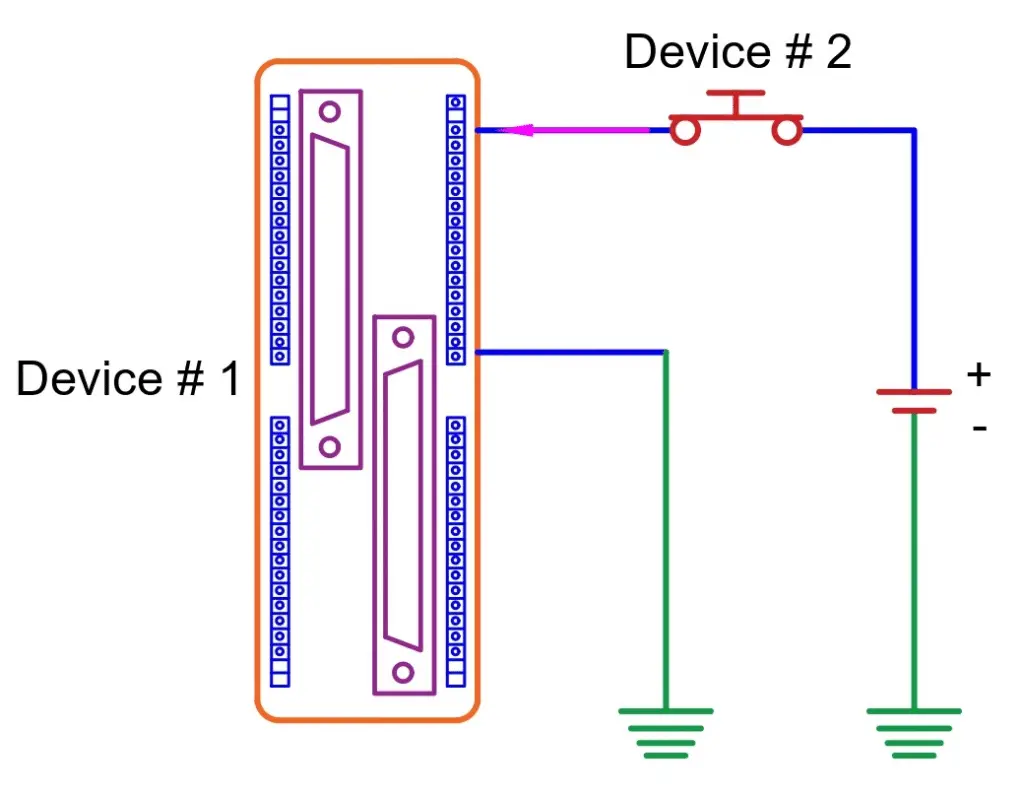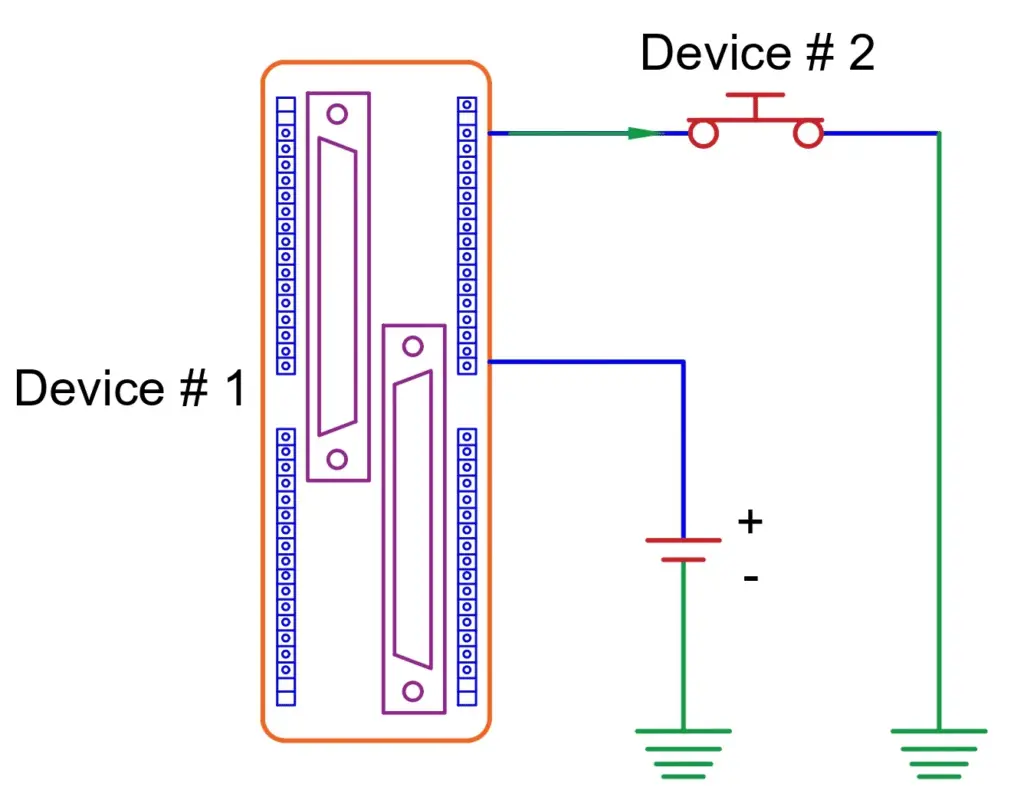This article describes the differences between the sinking and sourcing concepts. The sinking and sourcing circuits are used in numerous applications.
Sinking and Sourcing Current
Sinking Current: A device that receives/accepts the current into its control terminal from some other device is said to be sinking current.
Sourcing Current: A device that sends current out of its control terminal to some other device is said to be sourcing current.
NOTE: Here, the current flow considered is the conventional flow of current.
Sinking and Sourcing Circuits
An example of a sinking and sourcing circuit is a simple circuit used to turn on a fan in a room. We need a switch for a fan so that we can turn it on and off as and when required. This switch will control the power flowing to the fan. The power flow to a fan can be controlled by a switch. A switch is required in all electrical applications because without controlling the equipment purpose of operation can not be served. For example, mixers, iron. grinders, TVs, refrigerators, and similar types of electrical equipment need a switch for their on/off control.
A switch can be placed either in between the live wire (or the line power) and the fan, or it can be placed between the fan and the ground. In both cases, the switch controls the circuit which enables it to turn on and off. However, the switch must be placed in a series of live wire and fan for safety reasons, the arrangement of placing of switch in this way is called phase control. The neutral control scheme in which a switch is placed between the fan and the neutral wire is called neutral control and, this scheme is not safe. Therefore, we must wire a switch in the phase circuit.
In the first case, where the switch is between the fan and the power line, the voltage is sourced to the fan, thus completing the circuit. In this case, the fan is always attached to the neutral (or ground) line. So when we turn on the switch, power is sourced (in simple terms supplied) to the fan. This will result in the fan being turned on.
In the second case, where the switch is between neutral (or ground) and the fan, the fan sinks to neutral, hence completing the circuit. Here, the fan is always attached to the power line and hence when we switch on the fan, the neutral is connected to the fan (sinking of current takes place), and the fan turns on.
So in simple terms,
- A sinking input or output will provide a path to ground for any electric load.
- A sourcing input or output will provide the voltage source for any electric load.
Sinking and Sourcing Circuits in Industries
In the industries, the sourcing and sinking control circuits are a little different. In industries, PLCs are commonly used to control different processes. These PLCs were developed with the aim to automate and simplify control relay circuits that eliminate the complexity of wiring and add greater flexibility.
PLCs make use of software programs to manipulate control systems rather than hard-wired control relays. PLCs have input cards that read the feedback of control circuits. Input cards will connect internally to power or ground. When we need an input card to turn on, it is required to connect either the power or the ground to the input.
It depends upon which input card is in use. The ON state of the signal is used by the PLC to determine when to proceed to the next step of the process. For controlling the ON state, a switch is placed between the power or ground and the input card.
- An input card that is wired (connected) internally to the ground is referred to as a sinking input card. Here, the ground potential is routed through the input card and the input card feeds ground potential to one of the terminals of the device.

- An input card that is wired (connected) internally to power is referred to as a sourcing input card. Here, the positive supply is routed through the input card, and the input card feeds the positive supply to one of the terminals of the device.

Thus, a sinking input card will require power to be sourced to the input so as to turn it ON. And a sourcing input card will need a ground connection to turn it ON.
Sinking and Sourcing Circuits in Digital Input/output
When we talk about digital input/output, sinking and sourcing mean the direct control of the flow of current in a load. As mentioned above, here also a sinking digital input/output will provide a ground connection to the load and a sourcing digital input/output will provide a voltage source to the load.
Sinking and Sourcing Inputs and Outputs When Powering A Circuit
Hence it is very important to consider which device is powering the circuit when connecting different current inputs and outputs. All input and output devices can either sink or source current. For example, a 2-wire transmitter is a passive device that will sink current. On the contrary, a 4-wire transmitter will operate on external power and will source current.
Sinking Input
A device that can receive a signal and does not provide power can be used as a sinking input load. This means it would act as a resistive load. These must be connected to a device that will source its output signal. It can also be connected to a sinking output with a loop power supply in the circuit.
Sourcing Input
A device that receives a signal from a control system will provide power to the input signal. It must be connected to sinking output. For example, a 2-wire transmitter uses power from the receiving device.
Sinking Output
A device whose output signal will not provide power is used as a sinking output. It should be connected to a device that will provide power to the output signal, or a sinking input with a loop power supply in the circuit.
Sourcing Output
A device whose output signals will power the output circuit is a sourcing input device. This should be connected to a receiving device that does not provide any power and will act as a resistive load. For example, a 2-wire passive transmitter.